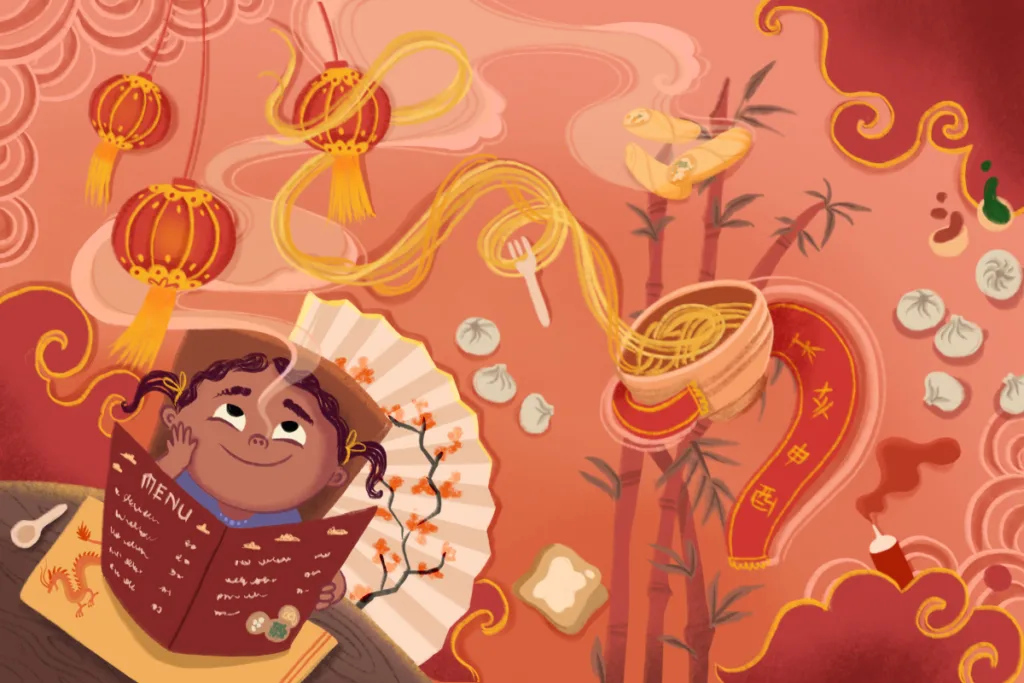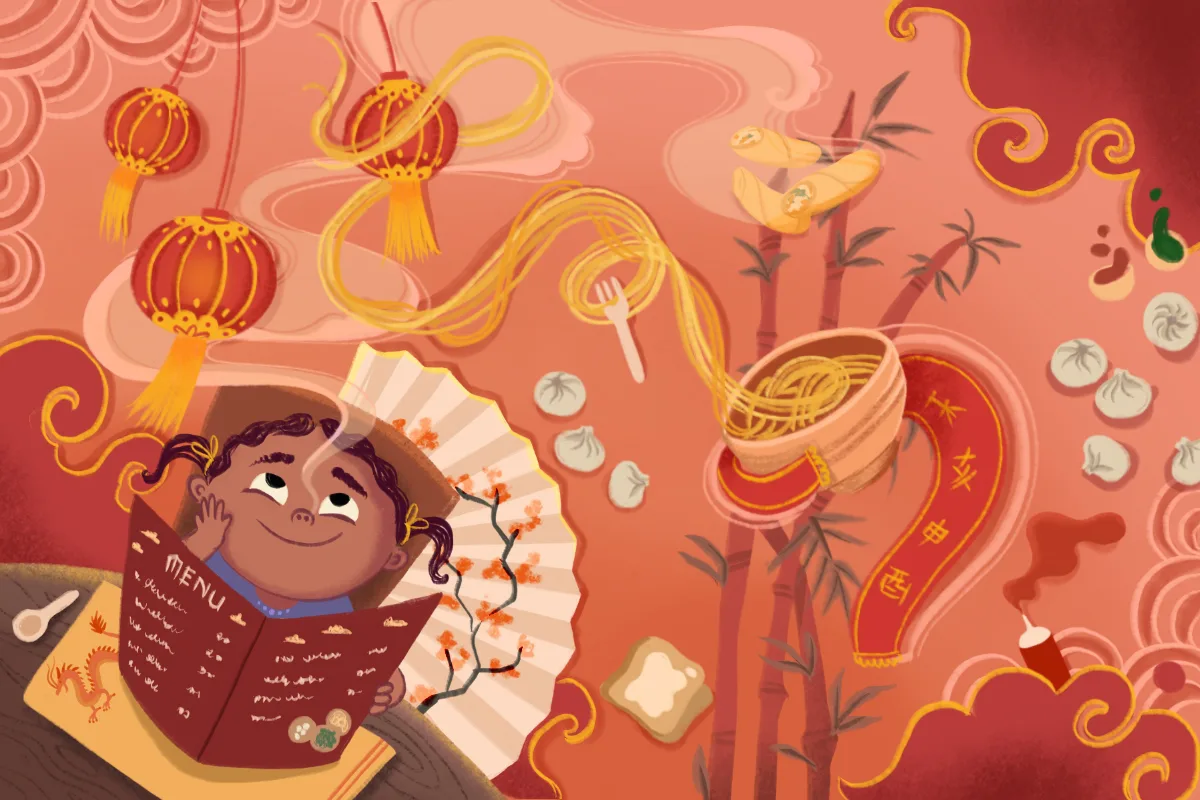From Bangalore, Guayaquil, Muscat and back, Nisha Susan regales us with some curious menus and entertaining stories

It was around 2005, I was 26, and I had ordered chicken soup at a Chinese restaurant in Guayaquil, Ecuador’s second largest city. The restaurant was a small, white box with big windows facing the street. The tables were white. The chairs were white. The lighting was perfect for a hospital or a hospital show. My friend looked at me with pity. The huge bowl that had just been placed in front of me had a white, bland-looking fluid with a giant, white piece of chicken floating in it. Even a hospital wouldn’t serve it. I had failed myself.
I had come to Ecuador two weeks ago with absolutely no qualms about being vegetarian. I had been vegetarian for some years but the kind of vegetarian who liked to go around being no-trouble-at-all, easy-to-please, yes-I-eat-eggs. Cuenca, where we had spent most of the fortnight, would have pleased even the nerviest vegetarian. A beautiful town in the Andes, I had great vegetarian meals as well as friends who spoke both Spanish and English. In Cuenca, I had no trouble ordering right and eating well.
But now in Guayaquil, the night before the long flight home, I wanted a comfort meal and had picked a Chinese restaurant. When in need of comfort, I always picked a Chinese restaurant. One friend and I had perfected the Chinese post-breakup lunch when he called me a liability for being vegetarian and for having bad taste in men while I ate sesame toast and sweet corn soup.
This menu had nothing discernibly vegetarian. While I had learnt a tiny bit of Spanish at top speed before the trip, Sopa Cantonesa de Pollo seemed like the safest option in the face of my limited translation skills. I was ready to down some chicken soup and go to bed. But here was this hideous looking white bowl with white soup and a white chicken leg. I really had failed myself.
Hadn’t my earliest training in dealing with the world come through menus in Chinese restaurants? Wasn’t it my happy playground? It was 1985, I was six years old. And it was the first time I ate in a Chinese restaurant – Chung’s, in Indiranagar, Bangalore. This is also my earliest memory of being at any restaurant. That year I had been sent to live with extended family – a newly married aunt and uncle – after my parents moved to a spot in rural Oman called Khabourah, where you needed a 10 kilometre drive to get any kind of takeout. My parents, whose early adulthood had been spent in old towns of Kerala and Karnataka with well-developed eating-out cultures, must have been stoic living in this coastal village.
It was 1985, I was six years old. And it was the first time I ate in a Chinese restaurant – Chung’s, in Indiranagar, Bangalore. This is also my earliest memory of being at any restaurant. That year I had been sent to live with extended family – a newly married aunt and uncle – after my parents moved to a spot in rural Oman called Khabourah, where you needed a 10 kilometre drive to get any kind of takeout. My parents, whose early adulthood had been spent in old towns of Kerala and Karnataka with well-developed eating-out cultures, must have been stoic living in this coastal village.
But my aunt and uncle in Bangalore, young and sardonic, said that it was a pity they hadn’t had a love marriage, and went out to eat as often as they could.
Chung’s was on the first floor of the shopping complex run by the Bangalore Development Authority (BDA) in Indiranagar. Back then, shiny establishments were perhaps a glint in Manmohan Singh’s eye but not in ours. Right then, the market was our only entertainment, and a quick walk from home. A few years ago, I giggled when I read in a newspaper that Ramesh Rai, Secretary of the Indiranagar BDA Complex Shop Owners’ Association had told the reporter, “I have a shop in this complex since 1983 and I don’t remember any period when this place was well-maintained.”
On the ground floor was a beauty parlour run by a Chinese family, where I got my haircuts for years, And upstairs, was Chung’s, where customers would be seated at the restaurant run by the same family. The dining area was dark and decorated with red paper lanterns. Soup bowls. New kind of spoons for soup. A boisterous table with five young men and one young woman in jeans, prompting my uncle and aunt to wiggle their eyebrows at each other. Chung’s had the atmosphere that I would grow to associate with all my favourite Chinese restaurants in Bangalore.
On my first visit to Chung’s, my uncle handed me a menu. I looked at the typewritten sheet and ordered the first thing that looked delicious. Bread Butter Jam. My uncle said to me in his customary grownup to grownup way: “You could eat that at home. Order what you can’t eat at home.” Oh. What I can’t eat at home. I studied the menu with more care. I picked spring rolls and was pleased both by the greasy deliciousness and by seeing my uncle and aunt eating some as well.
As an adult, I have eaten Chinese in Puri, Coimbatore, Nagpur, Shillong, Kathmandu, and New York, and apart from that one night in Guayaquil, it has never failed me. Though, I have never ever seen Bread Butter Jam in a Chinese restaurant again.
It was late 1999, and I was in university. I moved out of my grandparents’ home in Bangalore and into a room near my college. That particular evening, I didn’t have anyone to have dinner with. I rarely went out to dinner in the city. One of the reasons I was moving out of my grandparents’ home was because they wanted me back at four in the afternoon. There were a whole lot of us who were supposed to be home by four and a whole lot who ignored these expectations. This was, after all, an age of afternoon discos, and a time when even mild-mannered 19-year-olds had mastered day drinking.
The menus at the dozens of bars between Residency Road and MG Road were extraordinary – or felt extraordinary – to all of us who had curfews and high prison walls. Pitchers of beer. Beef and appams. Chicken 65 spicy enough to make you cry. You could even eat egg dosa on the street. I’d go to Indiana’s on Brigade Road pretending I was there for the burgers, but mostly it was for the thick homemade mayo. Or up the street to Shangri La, a Chinese restaurant so dark that you always wished you had a torch to spot a waiter.
And so, to be stuck at home was hellish. I could be anywhere. At Shangri La, or at Casa Piccola. Casa’s was a small chain of restaurants which served American food. The food came plated. There were flowers. Music. And all the Casas were bright, airy, fun places where you felt like you had been drinking but really you were learning to eat (and pronounce) profiteroles.
My new paying guest arrangement was a one-minute walk from a Casa Piccola. I celebrated by taking myself out to dinner. I was a vegetarian by then. In the spirit of a new frugal adulthood, I only ordered a minestrone – by pointing because I wasn’t quite sure how to say it aloud. I had a book. The soup came with bread and butter. I had the soup. I walked home.
Five minutes later, I couldn’t breathe. My brand-new roommate, who I had only met that afternoon, dragged me downstairs, threw me into an auto, and took me to hospital. I’d had an anaphylactic shock and she had saved my life. I never found out what had caused the allergy. The landlady threatened to evict me the next day because I was obviously a liability. But I managed to stay on.
I also managed to eat out a lot, avoiding the new old lady in my life. I went to Casa’s whenever I could, but never ordered the minestrone again. It was 1997. Just a few years before my rake’s progress would begin in Bangalore. I took my parents and a bunch of relatives out to dinner in Muscat. A few years before then, my parents had moved to the beautiful, seaside capital, and had moved my brother and me to the enormous Indian school in it. It was my last year away before I returned to Bangalore for college. I was looking forward to living in a city where I could go places by myself again.
It was 1997. Just a few years before my rake’s progress would begin in Bangalore. I took my parents and a bunch of relatives out to dinner in Muscat. A few years before then, my parents had moved to the beautiful, seaside capital, and had moved my brother and me to the enormous Indian school in it. It was my last year away before I returned to Bangalore for college. I was looking forward to living in a city where I could go places by myself again.
At that moment, though, I was deeply pleased because my teammates and I had just won a whole flotilla of prizes at a national quiz. Derek O’Brien – the eternal quizmaster – had been flown in to run the final round with pomp. It was the second year in a row we had made it to the finals but we had won for the first time. We had competed against adults under the gaze of a half a football stadium full of Indian students and parents. Our photos made it to the front page of the newspaper that had sponsored the quiz.
And each of us got a huge coupon for dinner at a Lebanese restaurant called Sindbad. I knew nothing about Sindbad but we were thrilled to go. Apart from all-you-can-eat-evenings at Pizza Hut, that evening at Sindbad is my only memory of going to a restaurant in Oman.
At dinner, the adults were in a giddy mood and kept failing to order or even look at the menu. After I exchanged a huge eye roll with the waiter, he decided that I was the one to turn to, the one in charge. I took the menu. I kept waiting for someone to take back the power but when no one did, I ordered khoubz and smooth hummus and platters of grilled meat, trying to calculate how much food we needed between the eight of us.
We ate pickled vegetables and olives as we waited.
I haven’t been back in Oman for years but Lebanese restaurants have from that day established themselves in my mind as a bastion of reliable generosity. Like a person who knows themselves well.
That evening in Sindbad, I didn’t know myself well. But I was no longer the girl who tried to order bread butter jam at a Chinese restaurant. I was not yet the woman who would order minestrone in Bangalore, or terrible chicken soup in Guayaquil. At that particular moment, the world order was shifting and I had ordered well.

